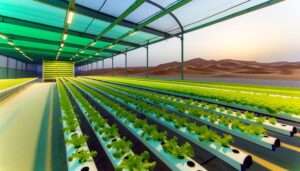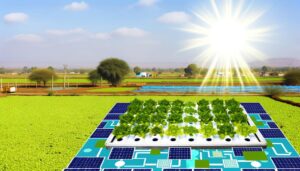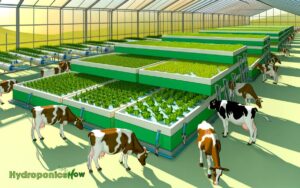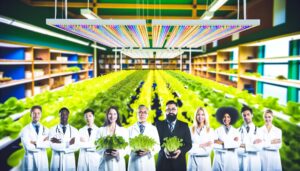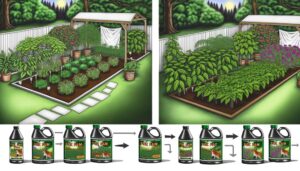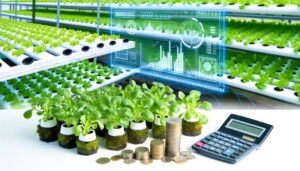Swot Analysis of Hydroponic Farming
A SWOT analysis of hydroponic farming highlights significant strengths such as utilizing up to 90% less water and being 3 to 10 times more space-efficient, resulting in higher crop yields and consistent quality produce. However, it also identifies weaknesses like high initial setup and operational costs, ranging from $200 to over $100,000, and the need for specialized technical expertise in nutrient and environmental management.
Remarkably, the global hydroponic sector is growing at 20% annually, presenting opportunities for urban food production and sustainability. Yet, challenges like economic viability concerns and regulatory risks pose threats.
For further detailed insights, the analysis continues to offer an extensive view.
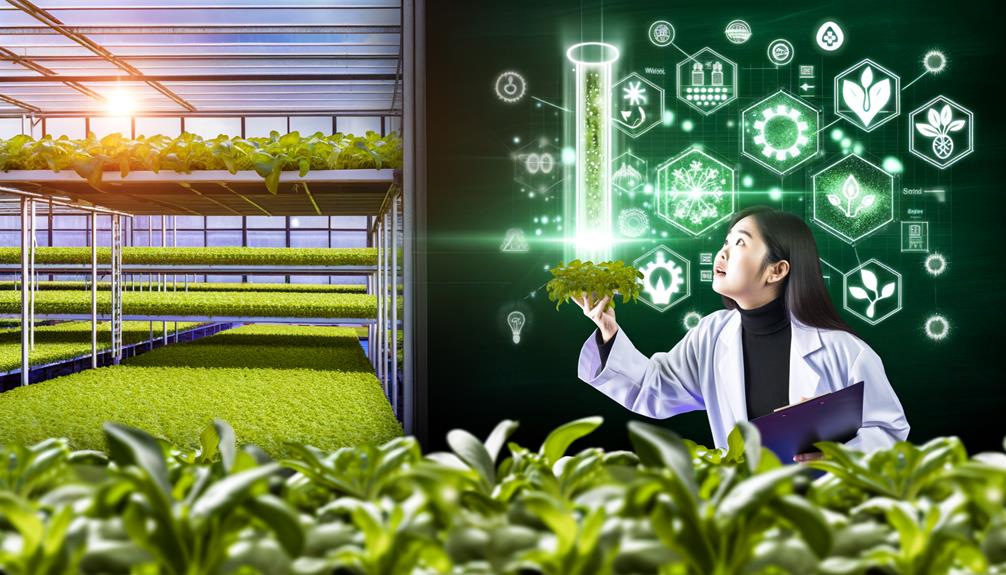
Key Takeaways
- Hydroponic farming utilizes up to 90% less water than traditional farming methods, promoting water efficiency.
- High initial setup costs and operational expenses can impact the economic feasibility of hydroponic farming.
- Hydroponic systems offer space efficiency, yielding 3 to 10 times more crops in the same area.
- Specialized technical expertise is required for nutrient management, system maintenance, and environmental control.
Understanding Hydroponic Farming
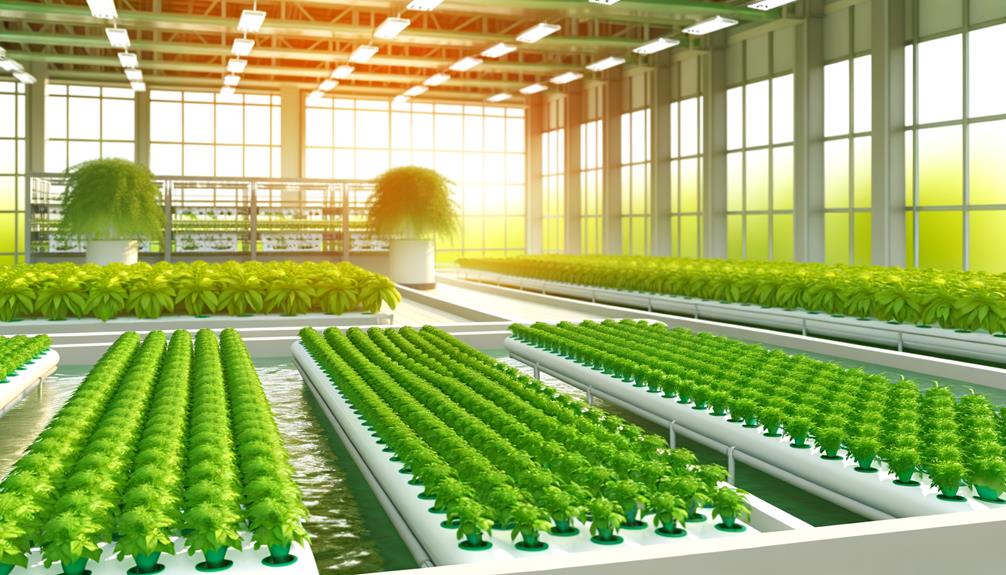
Hydroponic farming, a method of growing plants without soil by using mineral nutrient solutions in an aqueous solvent, has gained considerable attention due to its potential for efficient resource utilization and high crop yields.
This innovative agricultural technique relies on precisely controlled environments to optimize plant growth, considerably reducing water usage by up to 90% compared to traditional soil farming.
Additionally, hydroponic systems can achieve faster plant growth cycles, enhancing overall productivity. Data from controlled studies indicate that hydroponic farming can produce yields up to 30% higher than conventional methods.
The technology supports diverse crop varieties, ranging from leafy greens to fruit-bearing plants, making it a versatile option for modern agriculture.
These characteristics underscore hydroponic farming's potential to meet future food security challenges.
Strengths of Hydroponic Farming
One of the primary strengths of hydroponic farming is its ability to considerably reduce water usage, utilizing up to 90% less water than traditional soil-based agriculture. This efficiency stems from the closed-loop systems that recycle water and nutrients, thereby minimizing waste.
Additionally, hydroponic farming offers several notable advantages:
- Space Efficiency: Vertical farming techniques enable the cultivation of a higher number of plants per square foot.
- Pest and Disease Control: Controlled environments reduce the risk of pest infestations and soil-borne diseases.
- Consistent Quality: Hydroponic systems provide stable conditions, ensuring uniform growth and quality.
These strengths make hydroponic farming an attractive option for sustainable and innovative agricultural practices.
High Crop Yields
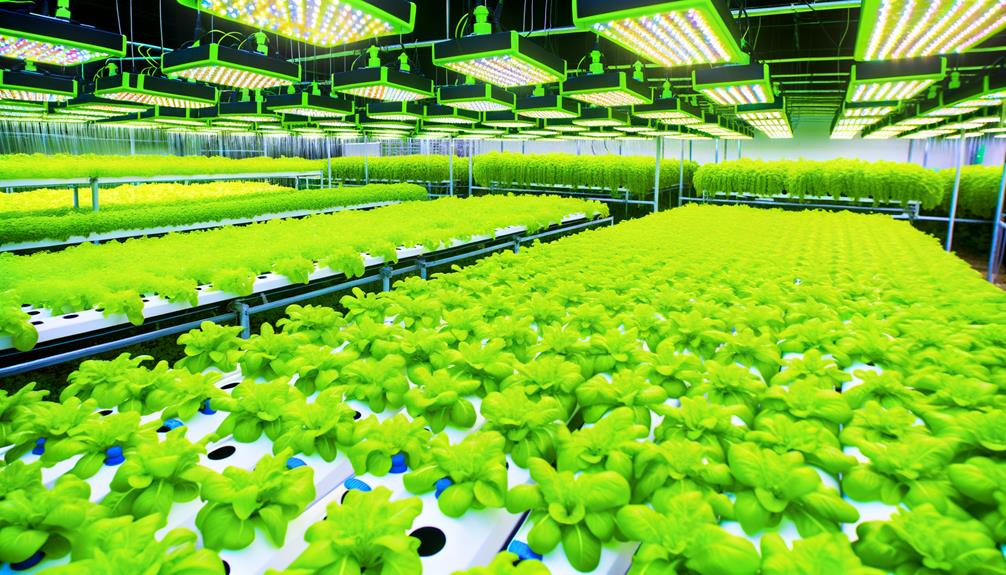
Due to the optimized growing conditions and efficient nutrient delivery systems, hydroponic farming consistently achieves higher crop yields compared to traditional soil-based agriculture.
Empirical studies indicate that hydroponic systems can enhance yields by up to 30% to 50%, attributed to the precise control over nutrient concentrations and reduced competition for resources.
Additionally, controlled environments minimize the prevalence of pests and diseases, further contributing to increased productivity.
The uniform distribution of nutrients and water guarantees that plants reach their genetic potential more effectively.
This high-yield advantage is particularly appealing for urban farming initiatives and regions with limited arable land.
Consequently, hydroponic farming presents a viable solution for meeting the growing global food demand, thereby addressing food security concerns innovatively and sustainably.
Efficient Water Usage
A considerable advantage of hydroponic farming is its remarkable efficiency in water usage, utilizing up to 90% less water compared to traditional soil-based agriculture. This efficiency stems from the closed-loop systems employed, which recycle water and nutrients, thereby minimizing waste.
Key factors contributing to this water efficiency include:
- Controlled Environment: Allows precise regulation of water delivery, reducing evaporation and runoff.
- Recirculation Systems: Enable reuse of nutrient-rich water, considerably cutting down overall consumption.
- Reduction of Soil-Related Water Loss: Eliminates water loss through soil absorption and evaporation.
These factors collectively underscore hydroponic farming as a sustainable alternative, particularly in regions facing water scarcity.
The data-driven approach not only guarantees resource conservation but also aligns with global sustainability goals.
Space Utilization
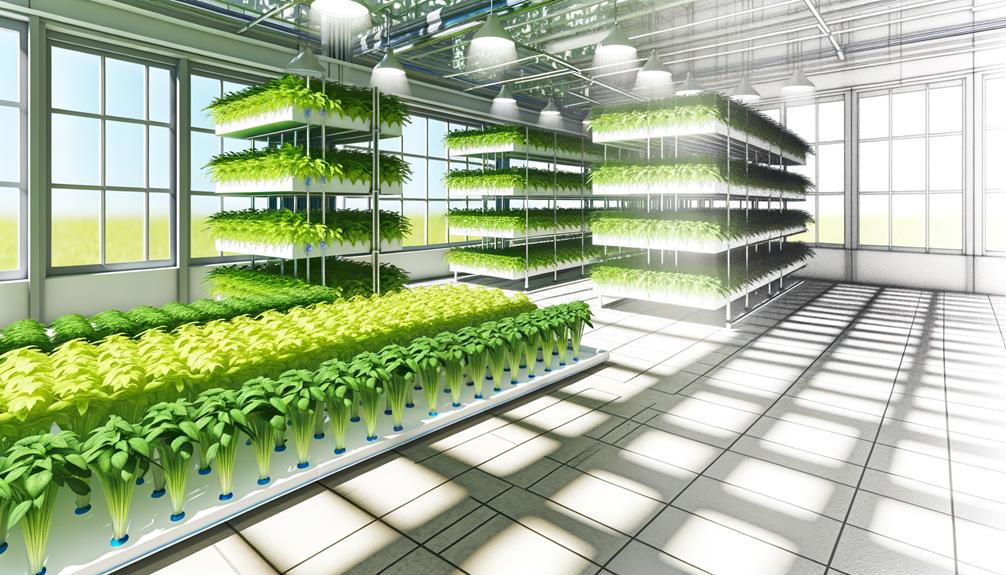
Beyond efficient water usage, hydroponic farming also excels in maximizing space utilization, allowing for higher crop yields per square foot compared to traditional farming methods.
Data reveals that hydroponic systems can produce 3 to 10 times more crops in the same area.
Vertical farming, a common hydroponic technique, leverages multi-layered growth trays to optimize space, greatly enhancing productivity. By utilizing nutrient-rich water solutions instead of soil, vertical farming ensures efficient resource use while minimizing waste. This method also allows for year-round crop production, making it a reliable solution for urban food supply challenges. When comparing hydroponics vs vertical farming, it’s important to note that while hydroponics refers to the soilless growing technique, vertical farming incorporates hydroponics along with other innovations to maximize space and yield.
Urban environments benefit from this compact farming model, making it feasible to establish farms in high-density areas.
The controlled environment of hydroponic systems further guarantees consistent crop quality and minimizes land use.
Consequently, hydroponic farming presents a compelling solution for meeting the growing food demands in space-constrained settings, underscoring its innovative potential in modern agriculture.
Weaknesses of Hydroponic Farming
Hydroponic farming presents several challenges, particularly high initial costs for setup and equipment, which can be prohibitive for small-scale farmers.
Additionally, the system requires a significant level of technical skill to manage nutrient solutions and environmental conditions effectively.
Another limitation is the restricted variety of crops that can be successfully grown hydroponically, limiting its application to a narrower range of agricultural produce.
High Initial Costs
One significant weakness of hydroponic farming is the high initial investment required for setting up the necessary infrastructure and technology. The costs can be prohibitive for many potential adopters, given the range of essential components.
Remarkably, the startup expenses include:
- System Installation: Advanced hydroponic systems, such as nutrient film technique (NFT) or aeroponics, can cost upwards of $50,000 for a medium-scale operation.
- Climate Control: Precise climate control systems to manage temperature, humidity, and lighting add significant costs, sometimes exceeding $20,000.
- Nutrient Solutions and Sensors: High-quality nutrient solutions and monitoring sensors are essential for ideal plant growth, costing an additional $5,000 to $10,000.
These initial expenditures can pose a barrier to entry, limiting the adoption of hydroponic farming.
Technical Skill Requirements
A notable weakness of hydroponic farming is the requirement for specialized technical skills to manage and operate the systems effectively. This encompasses a deep understanding of nutrient solutions, pH levels, and system maintenance.
Data from industry reports indicate that approximately 60% of hydroponic failures are attributable to inadequate technical proficiency. The complexity of managing automated systems, sensors, and software further amplifies this challenge.
Training and continuous education are essential, yet they incur additional costs and time investments. For innovative entrepreneurs, the steep learning curve can be a significant barrier to entry.
To mitigate this weakness, structured training programs and professional certifications could enhance operational competence and reduce the risk of system failures, thereby improving overall farm productivity and sustainability.
Limited Crop Variety
In addition to the technical skill requirements, another significant weakness of hydroponic farming is the limited variety of crops that can be effectively grown using this method.
While hydroponics excels in producing leafy greens and herbs, it faces challenges with larger, more complex plants. This constraint can be attributed to several factors:
- Nutrient Requirements: Different crops have varying nutrient needs, making it difficult to create a one-size-fits-all solution.
- Structural Support: Larger plants require robust support systems, which can complicate hydroponic setups.
- Economic Viability: High initial and operational costs may not justify the cultivation of low-yield or low-demand crops.
These limitations restrict the diversification potential of hydroponic farms, posing a significant barrier to broader agricultural innovation.
Initial Costs
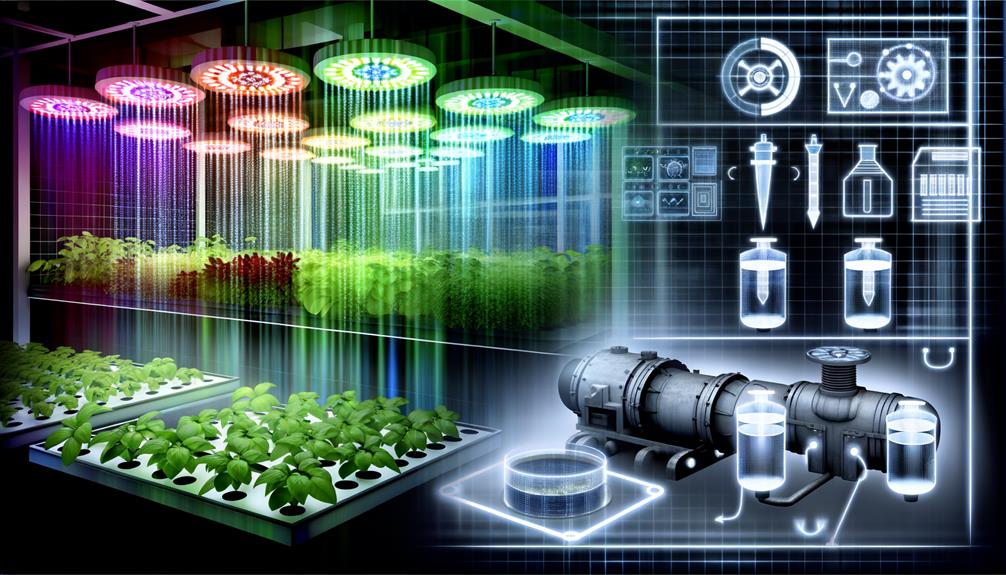
Initial costs in hydroponic farming present significant financial barriers, encompassing expenses for equipment and setup, nutrient solutions, and ongoing maintenance.
Data indicates that initial setup costs can range from $10,000 to $100,000, depending on the scale and sophistication of the system.
Additionally, nutrient solutions and maintenance fees add recurring expenditures that further impact the overall investment required.
Equipment and Setup Expenses
Establishing a hydroponic farming system requires a significant initial investment in equipment and setup, which can vary widely depending on the scale and complexity of the operation. Key expenses include:
- Structural Components: Greenhouses, grow tents, and support structures can range from $500 to $50,000.
- Hydroponic Systems: Basic systems like nutrient film technique (NFT) setups start at $200, while advanced vertical systems can exceed $10,000.
- Lighting and Climate Control: High-efficiency LED grow lights, HVAC systems, and environmental sensors can collectively cost between $1,000 and $15,000.
These initial costs can be a barrier to entry, but they are vital for achieving optimized growth conditions and maximizing yield.
Evaluating these expenses is significant for determining the economic feasibility of hydroponic farming ventures.
Nutrient Solution Costs
Alongside equipment and setup expenses, the cost of nutrient solutions is another crucial financial consideration in establishing a hydroponic farming system. These solutions are essential for plant growth, providing the necessary minerals and nutrients. The initial costs can vary greatly depending on the scale and type of crops grown. Typically, costs range from $0.10 to $0.50 per liter, impacting the overall financial feasibility of the operation. The table below illustrates a comparative analysis of nutrient solution costs based on different crop types and scales.
| Crop Type | Small Scale ($/L) | Large Scale ($/L) |
|---|---|---|
| Leafy Greens | 0.10 | 0.08 |
| Herbs | 0.15 | 0.12 |
| Fruits | 0.30 | 0.25 |
| Flowers | 0.50 | 0.45 |
Accurately forecasting these costs is essential for budgeting and financial planning.
Maintenance and Upkeep Fees
Evaluating the maintenance and upkeep fees is critical, as these ongoing costs substantially influence the long-term sustainability and profitability of a hydroponic farming system.
Detailed analysis reveals that these fees encompass several key components:
- System Maintenance: Regular calibration and replacement of equipment, such as pumps and grow lights, ensuring peak performance.
- Labor Costs: Skilled labor is essential for monitoring nutrient levels, plant health, and making necessary adjustments, contributing to significant recurring expenses.
- Utility Expenses: Hydroponic systems typically require substantial electricity and water usage, impacting monthly operational budgets.
Understanding these factors helps stakeholders anticipate financial commitments and implement strategies to mitigate costs.
Technical Expertise Required
Understanding the technical expertise required for hydroponic farming is vital, as it encompasses knowledge in areas such as nutrient management, system maintenance, and environmental control. Proficiency in these areas guarantees ideal plant growth and maximizes yield efficiency.
Data indicates that successful hydroponic farming necessitates an extensive understanding of nutrient solutions, pH level adjustments, and the management of water quality.
Additionally, maintaining the hydroponic systems, including pumps, lights, and sensors, demands a high level of technical skill.
Environmental control, involving the regulation of temperature, humidity, and CO2 levels, is essential for creating a stable growing environment.
Mastery of these technical components is important for minimizing risks and enhancing the sustainability and productivity of hydroponic operations.
Opportunities in Hydroponic Farming
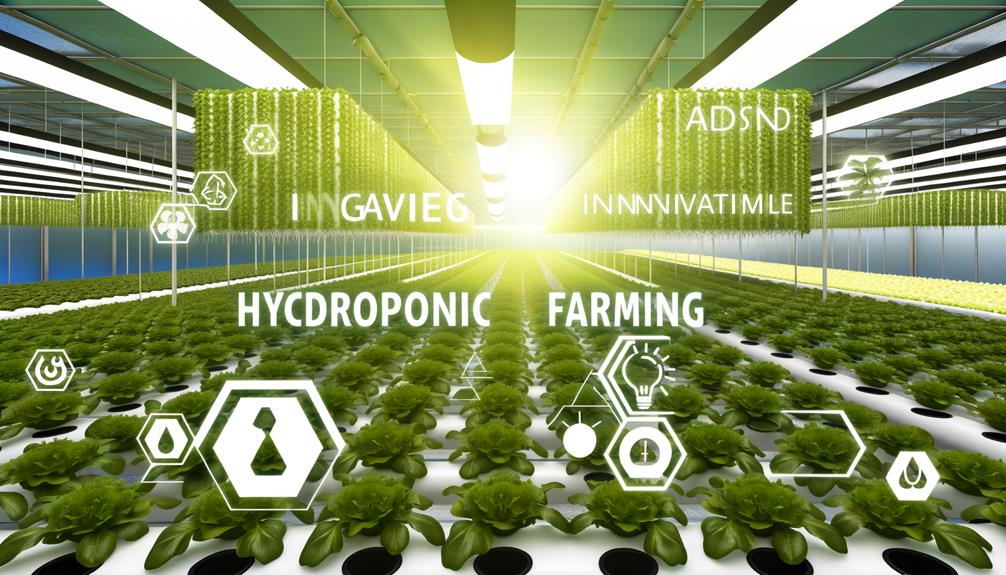
Hydroponic farming presents numerous opportunities for sustainable agriculture by enabling efficient resource utilization, increased crop yields, and the potential for year-round production. The innovative approach offers several strategic advantages:
- Resource Efficiency: Hydroponic systems use up to 90% less water compared to traditional farming methods, addressing water scarcity issues.
- Space Optimization: Vertical farming and controlled environments allow for higher density planting, maximizing output per square foot.
- Market Expansion: The ability to produce crops irrespective of seasonality opens new markets and reduces dependency on imports.
These opportunities are supported by recent data, which indicates a 20% annual growth rate in the hydroponic sector globally.
Such growth underscores the technology's potential to revolutionize modern agriculture, appealing to stakeholders seeking sustainable and profitable farming solutions.
Conclusion
Hydroponic farming presents a compelling paradigm shift in agricultural practices.
The strengths, including high crop yields, efficient water usage, and ideal space utilization, are tantalizingly promising.
However, the weaknesses, such as substantial initial costs and the necessity for technical expertise, cannot be ignored.
The opportunities in this innovative farming method are vast and potentially transformative.
The question that remains is whether society is prepared to embrace and invest in this cutting-edge solution for sustainable agriculture's future.

